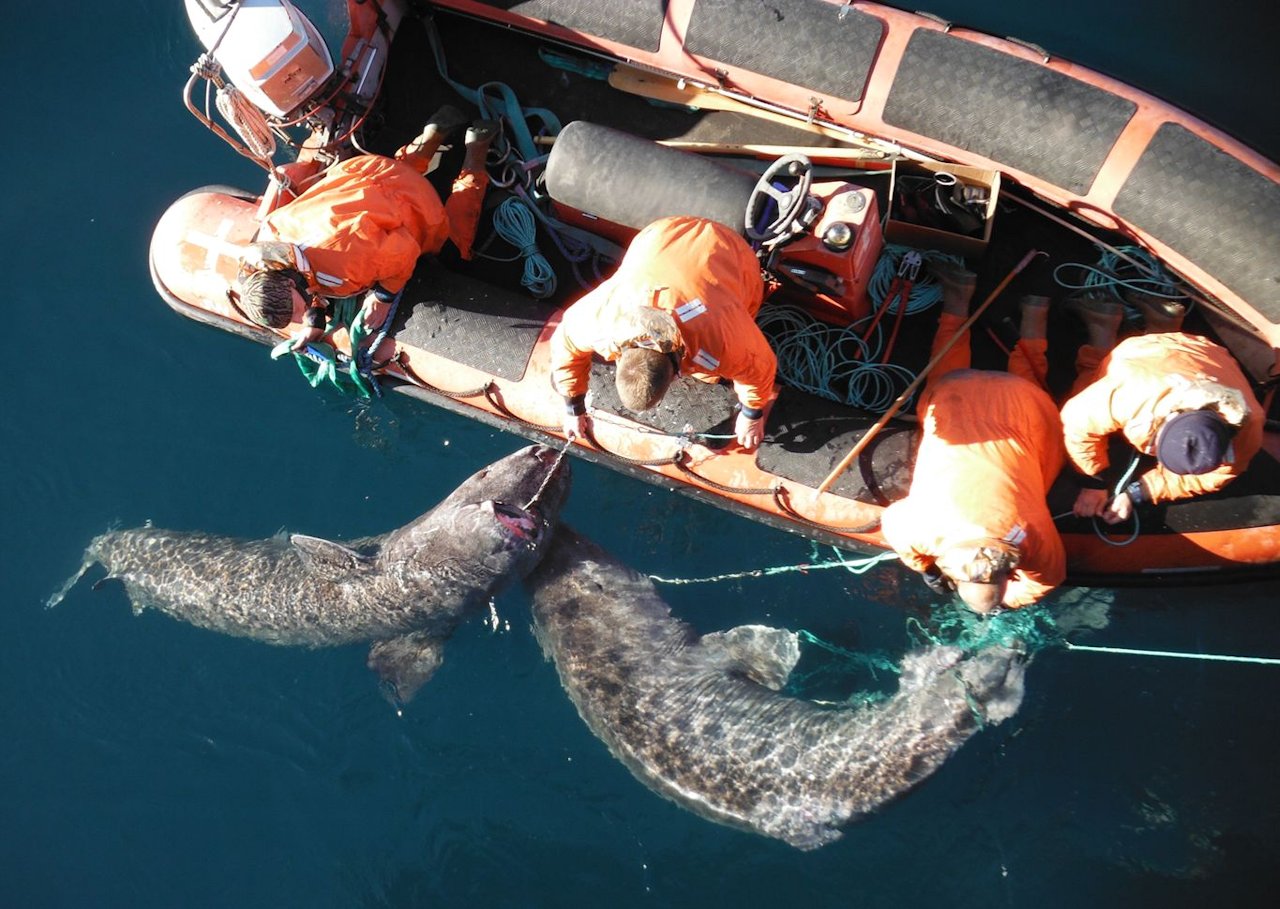
Old and cold - biology of the Greenland shark, Somniosus microcephalus.
Pictures from the project:

Amalie and Kirstine checking the new ultrasound scanner they will be using from an inflatable on the next research cruise to Greenland checking large females if pregnant.
We plan to wear bicycle helmets with mobile phones that via WiFi Display show the scanner image live, while we can keep the scanner in a box protected from the corrosive seawater.
Hence we can handle the shark with our hands in the water and still view the image. 2021. Here they are testing the equipment on a small-spotted catshark shark (Scyliorhinus canicula).
Trouble getting a 330 cm long Greenland shark with a mass of 346 Kg transferred to the intermittent-flow resting respirometer.
Qeqertarsuaq, Greenland 2015. Photo Alistair McConnell.

Greenland shark fishing from Sanna close to Upernavik 2014. Foto Julius Nielsen.

R/V Porsild and sailing vessel WHY meeting in Qeqertarsuaq, Greenland May 2014. Extreme divers from the expedition Under The Pole wanted to film Greenland sharks at depth down to 100 meters.
Photo: Under the Pole Expedition II - Greenland 2014 - 2015 - Lucas Santucci. (link).

Greenland shark in the MR-scanner at Dept. of Forensic Medicine, Rigshospitalet, Denmark. Foto: Julius Nilsen.
Parasitic copopod Ommatokoita elongata that is often found on the eye of Greenland sharks. Foto: John Fleng Steffensen

Greenland shark diet - fish, seal, squid - and a pepsi. Amasalik 2012. Foto: Julius Nielsen.

Two Greenland shark entangled in the longline. Amasalik 2012. Foto: Henrik Schurmann.
http://www.mbl.ku.dk/JFSteffensen/OldAndCold/Pictures
Updated January 2024.